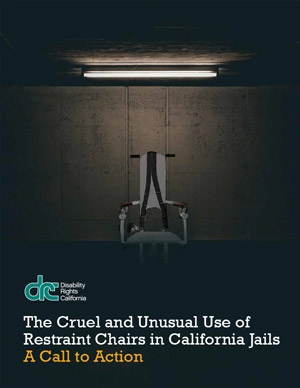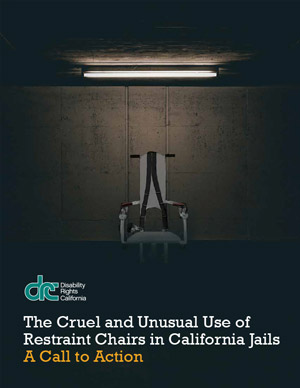The Cruel and Unusual Use of Restraint Chairs in California Jails - A Call to Action

The Cruel and Unusual Use of Restraint Chairs in California Jails - A Call to Action


DRC’s report shines a much-needed light on the current practice of inadequate supervision and standards that lead to increased risk of death or injury from restraint chair use.
The Cruel and Unusual Use of Restraint Chairs in California Jails
A Call to Action
DRC monitored restraint chairs use in jails throughout California, reviewing current regulations and jail restraint policies from all 58 California counties, examining academic research, interviewing county jail staff, and consulting with an expert on correctional health.
DRC embarked on its restraint chair monitoring project after learning of the death of Andrew Holland, a young man with schizophrenia who died from a pulmonary embolism after being held in a restraint chair for nearly 46 hours at San Luis Obispo County Jail.
Based on our findings, DRC urges California to adopt better protections for incarcerated individuals from the dangers posed by restraint chairs. “Ideally, county jails would not use restraint or restraint chairs. We found that some counties do not employ them at all. If counties do use restraint chairs, we recommend that they follow counties that use them only for as long as necessary to transport a person for outside medical care, and that a person not be held in a chair for longer than two hours,” said Pamila Lew, senior attorney at Disability Rights California and a principal author of the report.
Please download report and support our efforts to adopt better protections for incarcerated individuals from the dangers posed by restraint chairs.
Read our Press Release





